- Home
- About us
- Blog
- Shop
- Brands
- ALL Brands List
- Analog Relax
- Antipodes Audio
- Audio Solutions
- AudioByte
- AudioCircle
- Audiomica Laboratory
- Canary Audio
- Canor Audio
- Chameleon Audio
- Dan D'agostino
- Eversolo
- Ferrum Audio
- Fezz Audio
- Glanz
- HiFiMAN
- HoloAudio
- LAB 12
- LAIV
- LampizatOr
- Magico
- Mega Acoustic
- Monrio Audio
- Origin Live
- Phasemation
- Pink Faun
- PLiXIR
- Qualiton
- Reed
- Remton
- Revival Audio
- Riviera Audio
- Rockna Audio
- Sbooster
- Shelter
- Sigma Acoustics
- Signal Projects
- SOtM Audio
- SPEC
- Takatsuki
- Takumi
- Tedeska
- Tellurium Q
- Trafomatic Audio
- Tsakiridis Devices
- Volumio
- Sales
- Second Hand Deals
- Account
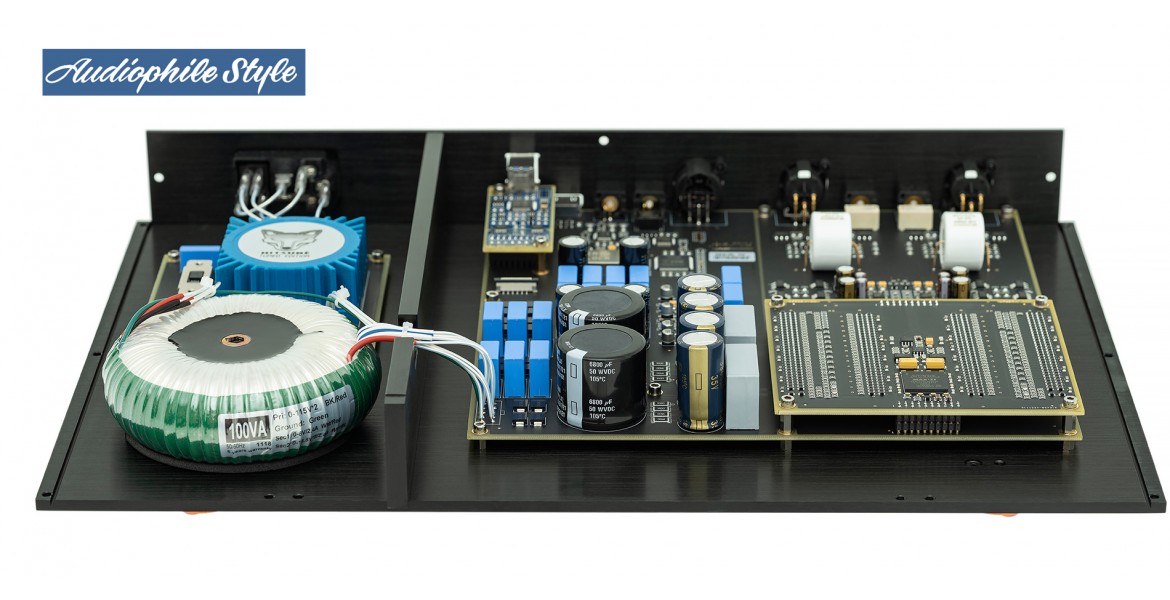
Holo Audio Spring KTE R2R DAC Review
Best Of Both Worlds? Best of Neither? The Holo Audio Spring Level 3 Kitsune Tuned Edition R2R PCM/DSD DAC
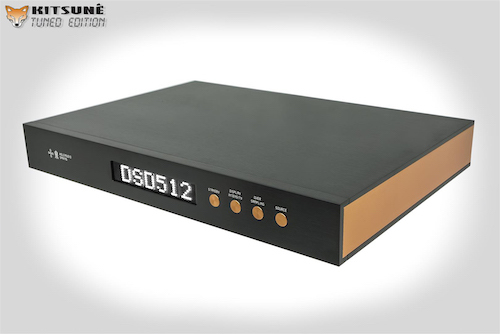
The world of digital audio is often a confusing one to the prospective buyer. How does one differentiate between technical jargon and marketing terminology, especially within an industry segment that is changing rapidly and offering supposedly the same sample and bit rate playback from $199 to $99k? Does one need to buy a PCM dac and convert any good DSD-based music to it? Conversely, buy a DSD-rich system and then upsample to that system’s DSD sweetspot? Which upsampler? Own two dacs?? Yikes. Nowadays there is a sub-sub segment of this confusing DAC market that seems to be offering two dacs in one, a PCM side and a DSD side.
Keeps cold things cold and hot things hot…how does it know? 🙂 This review is not hugely technical (duh, mine never are) for many, many reasons, not the least of which is due to my brain stem and Catholic school math and science burnout. When I got to a Marianist university I discovered pot, sex and philosophy (mostly in that order). I realized that technical things need to be explained via the soul, not the brain, in order to make sense for me. It’s really well-justified laziness, but I had finally found my comfortable skin…..if I don’t need to know what ketones are used for, I don’t need to know ketones! Period. B.S in English and Journalism, career in software sales/management. Dumb down tech jargon to make sense to a burned out elitist. Enough about me.

The subject of this rambling is the new Holo Audio Spring Kitsune Tuned Edition DAC (aka HSKE for short). The designer, Jeff Zhu, is a Chinese manufacturer who has created the Spring dac, a unique approach to R2R ladder design. Instead of finding one-in-a-million perfectly spec’d resistors to create a PCM ladder, he created a dual set of resistor networks, one for PCM, one for DSD, and then created a second set for each, whose sole purpose is to (digitally) linearly compensate for any out of spec resistor tolerance on-the-fly. This is ridiculously oversimplified. Google it to understand more fully, or go to the US distributor’s website at Kitsunehifi dot com to read more.
The net of this is that Jeff has offered this design for under $2k, and then Tim Connor (aka Kitsunehifi aka @bimmer100) has worked with Jeff to enhance and tune the design with a custom 99.99% silver transformer, better capacitors and wiring, upgraded audiophile fuse, etc. to provide for a fully warranted official production Holo Audio Spring dac at $2399. This dac is what they also call Level 3. (note: I never heard any other level so cannot answer any comparative questions, sorry). Build quality is first-rate. Black case with nice copper sides. The dac front panel has a large but reasonable display, and a set of copper buttons provide for the requisite changing of inputs (USB, I2S, optical, coax and AES/EBU), display brightness, standby button and a unique oversampling set of modes (NOS, OS, OS PCM, OS DSD). Although The OS modes do internal oversampling (PCM, DSD or forced to one or the other) I listened to this DAC in only NOS mode, where no oversampling was done by the dac at all. If oversampling was done, it was done prior to reaching the dac.
I may experiment with these features later, but it is clear that NOS mode is easily the best of the four modes. The back panel includes all described inputs (both BNC and RCA coax) as well as two sets of outputs, RCA and XLR. The design document claims a truly balanced design, and an inherent lower noise with XLR outputs, but I have only single ended preamps (Perla and Concert Fidelity) on hand, so I listened to it via RCA. When I get my passive Bent TAP back from a buddy I may try and a/b the XLRs, but it’s not my go-to preamp so it would be merely academic. IEC output and fuse holder (includes Audio Horizon Platinum audiophile fuse) completes the back panel. A remote control is not a feature this dac has, nor does it contain a preamp or headphone functions either. From the website, here is a description of the I/O: “There is an Op Amp used for input stage and discrete component used for the output stage. The discrete output stage is working in pure class A. The output voltage is 2.5 Vrms for single ended output and 5 Vrms for balanced output.
The single ended is RCA. Balanced is XLR. They both use the same output stage. It’s Bipolar Junction Transistors, direct coupled. The big MKP capacitor you can see in output stage are for the power supply, not for signal coupling. And the output impedance is 200Ohm.” The dac seems to be relatively normal (compared to ther dacs) in its sensitivity to better user-provided cabling, whether digital, analog or power. I used High Fidelity analog cabling from dac to preamp, TotalDac D1 USB cabling (or microRendu hard USB adapter( and either my own Nordost or loaned Wireworld HDMI cabling for I2S. My go-to power cables are Sablon Petit Corona. So, how does it sound? First a little about the signal paths used. My listening was done 100% via HQPlayer, which is my go-to software. I listened to three different signal paths, via HQPlayer’s Network Audio Adapter sitting on my microRendu in Linux, and my Caps Carbon in Windows, feeding either the DAC directly via JCAT USB card and a TotalDAC D1 USB cable, or indirectly via the DACs I2S input (using a Singxer SU1 DDC via same USB path, and then I2S output via an HDMI cable).
All of these paths were being fed, via my fiber optic network, via my large Win 10 i6700k Audiophile Optimized server, sitting in my home office, running the latest HQPlayer build. Net/net, this setup allowed me to listen to the Holo’s USB via either its newly capable raw DSD512 microRendu Linux certification, or it’s beta Windows driver (USB and I2S).
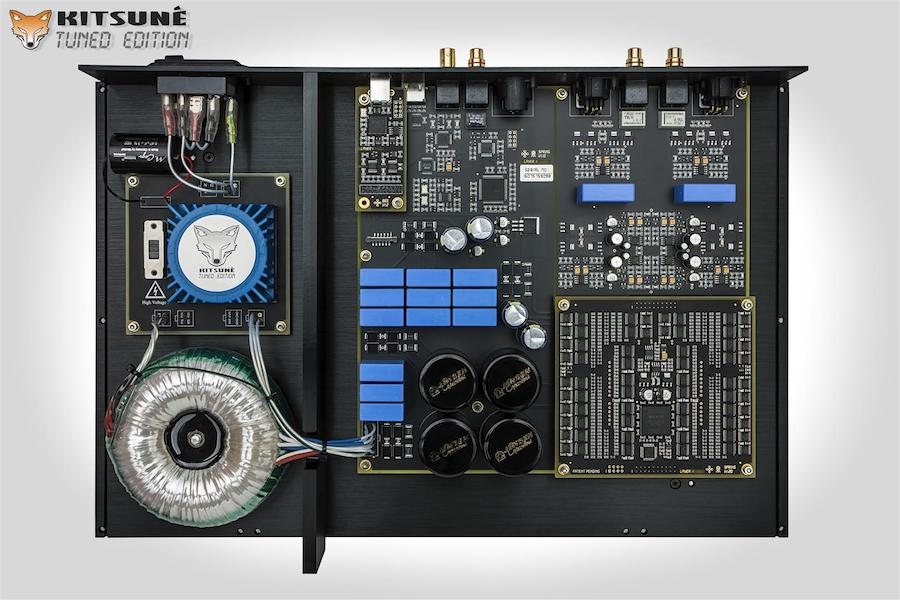
So, how does it sound? I will describe in chronological order. Seriously? Why? Because when you evaluate a DAC purchase, you evaluate the support and real world response of the dealer and manufacturer, and in this case, the capability and sonics of this DAC improved with every week I had it, in no small part thanks to the great support provided by Tim and Jeff (and Sonore’s Jesus, too). For example, when I first got the DAC, it was incapable of showing its full potential via my go-to microRendu (set up as HQplayer NAA). And no Windows driver was available. I knew this going in, but wanted to hear this R2R implementation regardless. In just a matter of 2 weeks we had raw DSD512 Linux “certification” (Juergen and Jesus, thank you) and an evaluation Windows driver from Jeff. A little note about Jeff and Tim: They were skeptical about the need for DSD512, as I expected, since no recordings were available at that rate. But after hearing about the growing excitement for software like HQPlayer, and the magic that often comes with properly engineered upsampling to this silly deep space 22+ MHZ rate, Tim convinced Jeff it was worth an effort. Well, it took all of like 5 days for Jeff to provide firmware and updates that brought the Spring to the level it is now capable of (in production, no less). So…..how does it freaking sound?? My obstacle-course playlists consist of favorite tracks of all sample and bit rates, where the music is inherently recognizable down to the chair creaks and dimensions of the recording studio walls (a sickness inherent to this hobby, thank you). In all seriousness I am a stickler for tonality/timbre, attack/decay, image density and the blackest noise floor I can find.
It is usually not until all of these aspects of musical playback are achieved that I will find toe-tapping and outright laughing-to-myself musicality happiness (embarrassing when spouse breaks in to listening session, but she gets over it 🙂 ). The playlist content ranges from Radiohead to Cassandra Wilson to the Cleveland Orchestra to Beck to Bill Frisell to the Budapest Festival Orchestra to the Cowboy Junkies to Daniel Lanois to Peter Gabriel to Keith Greeninger, among others. Um…how does this DAC sound? Well, it sounds like no other DAC I’ve owned or listened to. It sounds like a great PCM DAC (I’ve heard a few that sound as good); it sounds like a great DSD DAC (I’ve heard a few that sound as good). It sounds ok at DSD512. Confused? Let me explain. As I have stated before, I review and own reasonably priced DACs. Not that I cannot afford to own (and certainly review) expensive ones, but my approach to the digital world prohibits me to want to listen to something that has a high degree of obsolescence vs. investment. It’s a somewhat flawed approach, but it’s mine. In that light, I’ve never really heard a good sub-$10k R2R PCM DAC that didn’t sound too polite or maybe even rolled off at the high end (caveat: I’ve never heard an MSB or TotalDAC in my own system). So I had no real great expectation for the Spring in PCM mode, and had skepticism for it doing native DSD at all, period.
Best case, it would excel at some PCM rate and would be capable and polite in DSD. This Spring DAC is the first DAC I’ve heard in my own system that excels at both PCM and DSD. Yet, I am not currently using any upsampling in HQPlayer as it does not seem to excel there. So all this work (as I explained, Jeff may have done a boatload of work to get it to DSD512 but he delivered it in record time so not sure how much I put him out) to get to DSD512 is not really necessary to my ears. Yes, that is weird, I agree. But to my ears I enjoy the sonics of simply running PCM with all filters off, and running DSD in DirectSDM mode, meaning no upsampling. Sure, you can upsample to DSD512 if you’d like, but I find it to be a percent or two too polite (I use that term a lot; to me it means less alive, less air, less dynamic, but listenable nonetheless). I cannot say whether this is due to HQPlayer (I doubt it) or the DACs first foray into DSD512. I will publish follow ups (such as upsampling some music to DSD512 offline and comparing). When played via the microRendu the HSKE is capable of all sample rates in native mode (aka HQplayer’s “SDM pack equals none” setting). I did 50% of my listening via this path, and found the DAC to extract every nuance of detail, yet provide timbre and color that did not call attention to hyper-detail, as is so often the case. Bill Frisell’s “gone, like a train” redbook album is one of my great timbre tests. The recording is beautifully rendered and full of color and tonal densities. These colors are played back wonderfully on the HSKE, with just the right amount of saturation. (Note: I have stated elsewhere on CA that the only downside of the microRendu is my use of its hard USB adapter. I cannot do without it as every other USB cable reduces the dynamics and air that is so unique to the microRendu, but it comes at a cost. The “hard” adapter is aptly named, as it adds a few percent of hardness to the lower treble region.
I discount this when explaining timbre or color capability in a dac, as I also run a Windows NAA and the timbre/color aspects are easily revealed there). Image density is a term I use to describe how well instruments and the human voice are played back with real world shape, size and depth. Of course this depends heavily upon speaker and room setup, let alone recording engineering, but since those are constants, once setup correctly the DAC must come through. It is possible to have a dac that portrays a well-recorded piano, for example, too wide or too shallow. Performance style notwithstanding, Penatatone’s Mari Kodama Beethoven sonata cycle is my standard for piano image density in DSD. I’d never heard a piano sound like an in-room piano before I heard this DSD recording (Sonatas 16-18 specifically) on my Meitner MA-1 a few years ago. I was smitten with DSD that day.
Well, the HSKE sounds like my Meitner. Enough attack/decay, but not too much. The piano sound is visceral but not 20 feet wide. The sustaining/dampening pedal sounds are real. It’s beautiful, but not overly sweetened nor ethereal. It’s a percussive experience, as it should be. Lately I am lucky to get unedited DSD256 masters from Tom and Jared, my compatriots at Channel and NativeDSD. When played back through the HSKE they sound as real, as dynamic and as void of all noise floor issues as any DSD256 capable DAC I’ve heard. As with most ultra-high sample rate recordings, the you-are-there micro dynamics are palpable and sometimes scary. It is here where this DAC shows, however, a slight politeness when upsampled to DSD512. I currently have no good explanation for this, but it’s also a moot point, as native DSD256 playback sounds just fine, thank you. Switching to Windows NAA playback (via Caps Carbon and JCAT USB card), the nth degree of immediacy from the microRendu is replaced with a calming of the lower treble (hard adapter no longer in play). All else is identical, as is the capability to play native/raw sample and bit rates ad nauseum, up to DSD512. Some slight handshake issues with the HQP GUI (playback doesn’t stop immediately when pressing stop button, etc) are likely the fault of the eval Windows driver and not a blame of the DAC per se. Enter the $399 Singxer SU1 DDC (also on loan from Tim). This allows me to use the HSKE’s I2S input via HDMI cable (this is not a cable review; I used Tim’s .5M Wireworld and my 1M Nordost Silver Screen, both to perfect use).
The I2S added a slight back the slight bit of immediacy and sounded best of all three signal paths, a sort of microRendu-if-hard-adapter-would-settle-down sound that hit all the buttons. I’d never heard Keith Richard’s 1992 redbook solo attempt, “Main Offender” sound so live and sizzling, as if the guitar amps were plugged into my home outlets. This album is a sleeper (bad word choice; no sleeping during listening) as it shows 16/44 micro dynamics to be a very real thing. Another I2S track standout was Gillian’s Welch’s alt-Americana masterpiece “Harrow and the Harvest”. Her voice achieves a warmth and depth that is often difficult to recreate on this otherwise fine recording. Dave’s great minimalist guitar work is the best I’ve ever heard it sounding. An album that is difficult to turn off. Another clear winner on I2S, especially due to the blackness of the noise floor, is the newest Radiohead masterpiece (yes I use that word too often, but in these cases it’s appropriate), the 24 bit Moon Shaped Pool. The understated palette of color and complex rhythms (took me at least five full listens to “get” this album) from these slower tempo tracks are perfectly captured by the HSKE via I2S. However, currently the I2S would only play back with any stability in DoP mode, DSD256 max. Via the XMOS Windows ASIO driver it does not play direct DSD currently. No big deal, just trying to be fully transparent here. This could very well be user error, and I am not here to review the SU1 in any detail.
But if I was offered a commensurately sounding microRendu hard adapter for $399 I’d have a tough choice to make. And the Singxer has more flexibility of inputs/outputs, etc. Downsides: As seems to be inherent, in my system, in all designs that can handle both PCM and DSD, there are numerous combinations of software playback parameters that tend to cause various levels of clicks or even thumps when switching amongst formats in playlists. We have discussed these ad nauseum, and even the more up-to-date DSD extraction tools do not ameliorate them. These anomalies occur with the HSKE too, the worst of which is (currently) in the Linux-direct world of the microRendu.
Just be forewarned. I’m not here to say this dac uniquely causes them. Stay tuned though, as I have asked Tim and Jeff to give me their $.02. I am sure that the MSBs and TotalDacs of the world have created wonderfully sounding dacs that can excel at both formats with custom R2R designs. So, spend lots more money and you get there, no doubt. But I am allergic to investing that kind of dough into digital at this time. I have zero issues with those who do, however, as several close audio buddies already have. As stated earlier, I will update this review as I find more to report. But certainly at this time I am intrigued enough at this implementation of linear-corrected/compensated R2R to invest my own monies in this DAC, and in Tim and Jeff’s approach to customer service. And it’s not like they do this for reviewers only; I’ve chatted and read enough from other users to know they treat their first customers all the same. Can that scale? Well, by their enthusiasm and knowledge I can only assume it will…that’s a good problem to have.
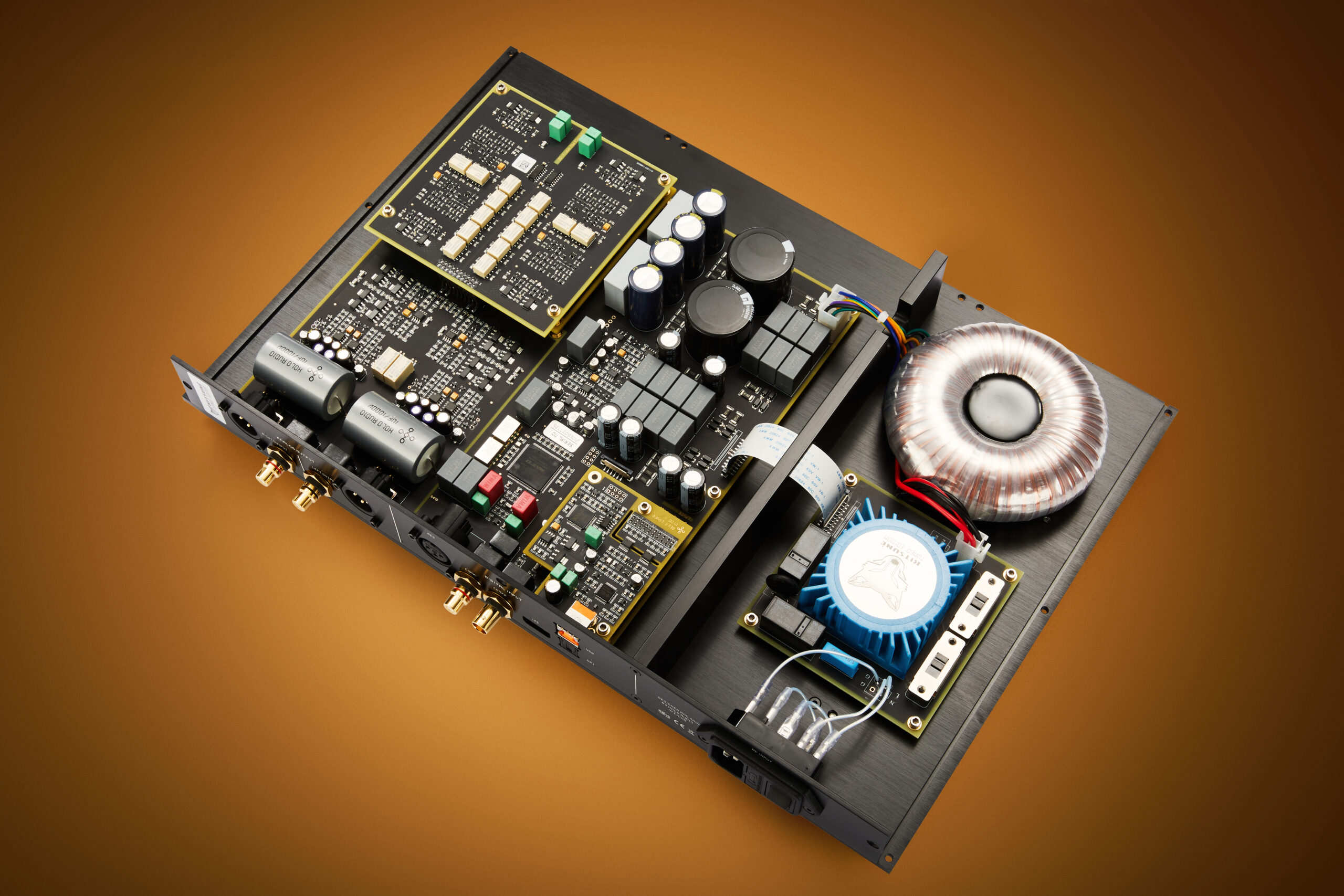
PART TWO
I’m starting a part two section that will be updated in real-time, rather than adding edits and updates to the response thread (which will be difficult for some readers to even find, let alone make sense of). First off, I decided to buy the Singxer SU-1. It is high value at $399 and offers a great I2S signal path. I will write more about I2S sound vs USB sound soon. Second, for those of you jumping on the Holo Audio/Singxer solution, a note of possible incompatibility, and a solution. My Singxer was shipped with XMOS firmware V2.02 (not driver number, firmware number). When playing DSD via I2S I discovered that the DSD channels were reversed, but not PCM.. If one is using a product like JRIver this is easily solved: switch your dac to preamp interconnect leads and tell JRiver to swap your PCM channels in DSP. Since JRIver does no DSP in DSD all is well. However, for HQPlayer users (and for purity sake) I am not comfortable with that work around. After chatting with Leter from Singxer I was given a slightly earlier V2.00 firmware to install, and now all is well. 🙂 Thanks Leter.
P.S I have no idea what v2.00 does for other I2S dacs, sorry. I assume V2.02 exists for a reason. Third, and this is a little Rube Goldberg-ish, but I will try and feed the Singxer from the microRendu just to hear what it does. I will report back. Update: it plays only to 384k PCM via native (SDM pack none) but up to DSD256 via DoP. So far, sounds excellent in both modes (first background listen). I had to use the Belkin 4″ USB as my hard adapter would not fit (90 degree turn would help). I have the diagnostics into Jesus for addition to the native Linux list. That may take awhile, though, as Sonore usually only adds when there are more than a couple to add at a time. Also, my loaner Yiggy arrived and I will be putting it in play tomorrow. Thanks again to the generous CA reader. I have to report to bibo01 and others that I “think” I like 16/44 upsampled (via HQplayer) to 24/352.8k (via I2S) as it renders a more accurate (to my ears) upper extension and a slightly tighter bass. But so far these changes are so subtle as to be easily mistaken for expectation bias if not careful. This redbook upsampling is no-brainer-easily-heard in HQplayer via other dacs.
It is certainly going to be tested with the Yiggy (since DSD is out of the picture). I have yet to retry any PCM-to-DSD since getting the stable Windows drivers or better appreciation for the Singxer. I will also retest any HQP upsampling via the microRendu too. Net/net, this dac likes its NOS and although I may be discovering some very subtle improvements in upsampling, they are not big issues at all. Yes, redbook NOS sounds great, and that is something I’d never believe. I have been lambasted on other forums for not taking more space describing how the Spring sounds in its upsampling modes (OS, OS PCM, and OS DSD). I tried to explain that the reason for that is due to the CLEARLY obvious NOS superiority (why listen to a dac in its worst modes). But to appease a few, I will try some more serious listening. A good test is to see what the DAC will do internally upsampling MP3, for example. Stay tuned.
Part two (continued):Yiggy comparo
Thanks to the generosity of a CA member I had the chance to listen to the Schitt Yggdrasil in my own system for the past 10 days or so. I listened to 3 inputs on the DAC (USB from microRendu and it’s own adapter, AES/EBU and BNC from Singxer SU-1). The SU-1 was first fed USB from the microRendu, then from my Windows NAA (TotalDac1 USB cable). I tested both upsampled (to 192k) and non, via HQplayer. Let me first say that the Yiggy is a very good PCM dac, and I would imagine in certain systems it would all that is needed to have a musical setup. However, in my own system (and I am getting a bit niggly here) I could not get rid of a slightly bleached lower midrange (affecting last ounces of color) and a nagging mid-treble sheen that took the Yiggy from being a possible keeper in my view. I am sure it is nothing more than system synergy, and while trying to tame it I found that my Windows NAA-to-Singzer-to-BNC (Sablon Panatela) coax was the best combination. The Yiggy has a slightly less deep soundstage than the Spring, while image density and overall soundstage width are close. The Yiggy presents music with a touch of smoothness overall (probably where lots of users get their “analog” sound comments) compared to the Holo, but this is a classic case of 5th row vs 30th row.
The Spring is more 5th row dynamics and micro-dynamics, which gives the illusion of less smooth. But there is no fatigue with Spring’s 5th row, and yet the Yiggy’s calm 30th row still combines with that nagging shine to provide a small touch more fatigue (in my system..not a small point!!). The Yiggy has nice, taut but powerful lower frequencies and just the right amount of detail, not too much that the mid-treble shininess would turn into harshness. These slight maladies would likely be easily tamed via a different combination of (maybe) power cords or something like a good tube preamp, etc. Dunno. But I tried other USB cables (JCAT, DH Labs) and other SPDIF ones (Black Cat, generic) and the result, if changed at all, was a slight change in overall dynamics or air, but the lower mids and mid-treble hiccups remained. They manifest mostly on female vocals (Rickie Lee Jones, Cowboy Junkies, Norah, etc) and jazz.
HQplayer’s poly sinc mp (minimum phase) can often be a game changer but the Yiggy seemed somewhat unaffected except for the slight expected differences in air between mp and non (and air is not a Yiggy issue; it recreates natural ambient cues nicely). I need to send back the Yiggy tomorrow so is there anything else I need to try with this DAC? I’m open to suggestions. Edit: by the way, the leanness of the lower midrange is receding over time (although I did not notice that trait with it feeding the Spring dac), and in line with other SU-1 reports (thanks tboooe and others) that state the same during break-in. I know the Yiggy is well-broken in, but my Singxer is only a several weeks old.
Part Three: Update listening impressions
It has been more than a few weeks since I reported on the Spring Dac listening, and I need to update the readers on what has changed. First off, Alex (superdad) was nice enough to let me hear an LPS-1 (and it’s not going back 🙂 ). I am using a y-splitter dc cable to have it power (at 7V setting) both the microRendu and it’s Trendnet 100/1000 FMC box (a 5V fiber converter). This new combination (replaces a JS-2 for the microRendu and a stock wall wart for the FMC, using a Meanwell laptop style ps to power/”energize” the LPS-1) has vaulted the microRendu into a newer stratosphere of both musicality and rock steady imaging. This new level of musicality has created one MAJOR change to my evaluation of the Spring dac. I now prefer DSD512 as the upsample choice of all native sample rates, both PCM and DSD. For PCM, the 8x (352 or 384, depending on original rate) PCM upsample sweetspot, using Poly-Sinc and NS4, is a close second, but hardly worth switching, although as reported earlier, the use of the uRendu in native Linux DSD does produce some slightly less than gawd awful thumps/clicks when starting up a new DSD session. Since this has been reported with other dacs, I can’t say it’s anything Holo can improve without some help from the wonderful open world of the Linux community.
But assuming the user is aware of it (turn down volume at first or create a large playlist and add to it so you don’t go in and out of DSD512) all is very beautiful. I complained about a slight lack of dynamics in DSD512 when first commenting on it, but that is eliminated with the combination of the LPS-1 (dynamic, speedy and tight), the poly-sinc-mp/ASDM 512 setting and likely further burn in of all components. I have yet to try the LPS-1’d microrendu into the Singxer cuz I hate not using a hard adapter (won’t fit) and all I have here is the nasty 4 inch Uptone-included generic USB dongle (Alex agrees) or use a full 1 meter top notch USB cable, neither of which provides the you-are-there of the hard adapter (note: the LPS-1 setup seems to help settle that hard-adapter-brittleness in upper midrange too). I’ve requested a Cardas one, but not even sure it will fit at the back of the very crowded Singxer back panel. Nevermind that the Singxer isn’t Sonic Orbiter/mR certified for native Linux yet (I see their FU-1 is on Jurgens github approved list no but not sure that is relevant for the SU-1, and am sure Jesus and company have not written updated code yet for it anyway). I could still test I2S with quite a few PCM and Dop’d DSD rates, but not going to yet. So, please feel free to keep asking questions.
The Spring dac continues to surprise (positively) and with Black Friday on its way I understand Tim and folks at Kitsune are running some sales deals. I am not associated in any way, other than a mighty happy customer, but I am always open to save $$. Happy Thanksgiving to all (in the US and elsewhere, the theme “to give thanks” is universal). Part Three will continue….. Happy New Year. Part Three continued: I have recently gotten a new pair of glasses (went years without the right ones) and now can see the tv, my golf ball in flight, and driving has become high def! Note: yes, I drove with a fuzzy view for many years. Why do I mention this? One word: Intona. I now have my microRendu connected via hard adapter to the Intona (industrial version) connected to my Spring USB inpout via the Sonore Cardas 90 degree twisted adapter. The Intona is described elesewhere on this forum, but suffice it to say that it is another USB isolation device, one that I assumed would not provide better isolation and sound quality than the tremendous job done already by product-of-the-year microRendu.
Well, I WAS WRONG. So wrong, in fact, that my recommendations for the Spring DAC have changed! Now, with the Intona in place, I am recommending the following: PCM setup in HQPLayer (poly-sinc-mp, NS4, 352k) DSD setup in HQPLayer (poly-sinc-mp, AMSDM7 512+fs, 22579200) Yes, I am back to preferring to hear my PCM in 352k, as the Intona seems to magically clean up (take the edge off) the top end of PCM and allow the dynamism more than DSD512 does. For DSD material the DSD512 preference remains a no-brainer.
Buy the Holo Audio DACs HERE!
